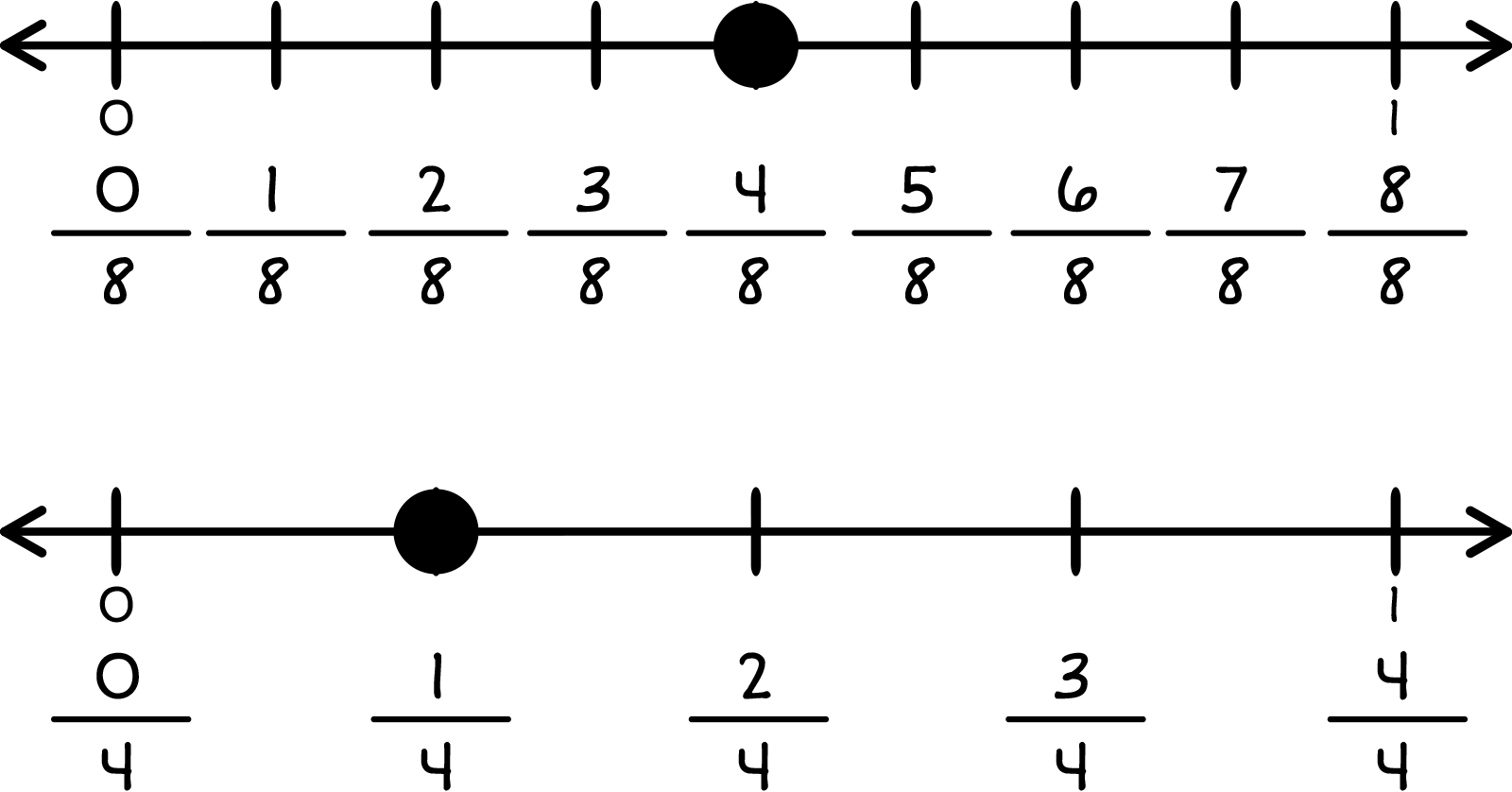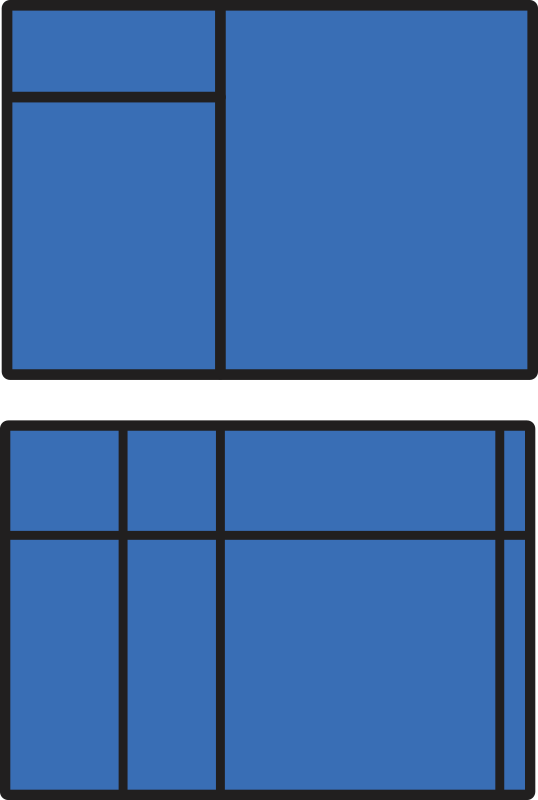Let’s Practice!
Which models show equivalent fractions?
Goal:
Goal:
We have been practicing how to create models to prove that 2 fractions are equivalent. In this next game, you will choose the models that show equivalent fractions. Remember, the models should be the same size and shape, and they should be partitioned correctly!
Which fractions are equivalent?
Which circles prove 13 and 26 are equivalent fractions?

Two circles.
First circle is partitioned into 3 parts with 1 parts filled in.
Second circle is partitioned into 6 parts with 3 parts filled in.

Two circles.
First circle is partitioned into 3 parts with 1 parts filled in.
Second circle is partitioned into 6 parts with 3 parts filled in.

Two circles.
First circle is partitioned into 3 parts with 1 parts filled in.
Second circle is partitioned into 6 parts with 3 parts filled in.
Which number lines prove 48 and 24 are equivalent fractions

Two number lines.
Top number line from 0 to 1 with 9 marks in between. Marks are labeled from 08 to 88 with a dot on 48.
Bottom number line from 0 to 1 with 5 marks in between. Marks are labeled from 04 to 44 with a dot on 24.

Two number lines.
Top number line from 0 to 1 with 9 marks in between. Marks are labeled from 08 to 88 with a dot on 68.
Bottom number line from 0 to 1 with 5 marks in between. Marks are labeled from 04 to 44 with a dot on 24.

Two number lines.
Top number line from 0 to 1 with 9 marks in between. Marks are labeled from 08 to 88 with a dot on 48.
Bottom number line from 0 to 1 with 5 marks in between. Marks are labeled from 04 to 44 with a dot on 14.
Which rectangles prove 36 and 12 are equivalent fractions?

Two rectangles.
Top rectangle is partitioned into 6 parts with 3 filled in.
Bottom rectangle is partitioned into 2 parts with 1 filled in.

Two rectangles.
Top rectangle is partitioned into 6 parts with 3 filled in.
Bottom rectangle is partitioned into 2 parts with 1 filled in.

Two rectangles.
Top rectangle is partitioned into 6 parts with 3 filled in.
Bottom rectangle is partitioned into 2 parts with 1 filled in.
Which number lines prove 02 and 08 are equivalent fractions?

Two number lines.
Top number line from 0 to 1 with 7 marks in between. Marks are labeled from 06 to 66 with a dot on 26.
Bottom number line from 0 to 1 with 3 marks in between. Marks are labeled from 02 to 22 with a dot on 12.

Two number lines.
Top number line from 0 to 1 with 3 marks in between. Marks are labeled from 02 to 22 with a dot on 02.
Bottom number line from 0 to 1 with 9 marks in between. Marks are labeled from 08 to 88 with a dot on 08.

Two number lines.
Top number line from 0 to 1 with 9 marks in between. Marks are labeled from 08 to 88 with a dot on 08.
Bottom number line from 0 to 1 with 5 marks in between. Marks are labeled from 04 to 44 with a dot on 14.
Which squares prove 44 and 88 are equivalent fractions?

Two rectangles.
Top rectangle is partitioned into 3 parts with 3 filled in.
Bottom rectangle is partitioned into 8 parts with 8 filled in.

Two rectangles.
Top rectangle is partitioned into 4 parts with 4 filled in.
Bottom rectangle is partitioned into 8 parts with 8 filled in.

Two rectangles.
Top rectangle is partitioned into 4 parts with 4 filled in.
Bottom rectangle is partitioned into 8 parts with 8 filled in.
You got # out of # correct. Click the Retry button for another attempt.
You got a perfect score. Great job!
Which shapes show equivalent fractions? Click the shapes below to find out!

Two rectangles.
Left rectange is partitioned into 8 parts with 6 filled in.
Right rectange is partitioned into 4 parts with 3 filled in.

Two rectangles.
Left rectange is partitioned into 8 parts with 6 filled in.
Right rectange is partitioned into 4 parts with 3 filled in.
😀 Yes! These shapes show 68 and 34 are equivalent fractions because both shapes are squares, they are partitioned into equal parts, and the purple sections take up the same amount of space.

Two rectangles.
Left rectange is partitioned into 8 parts with 6 filled in.
Right rectange is partitioned into 4 parts with 3 filled in.

Two rectangles.
Left rectange is partitioned into 8 parts with 6 filled in.
Right rectange is partitioned into 4 parts with 3 filled in.
🤔 These shapes are not partitioned into equal parts, so they do not show equivalent fractions.
